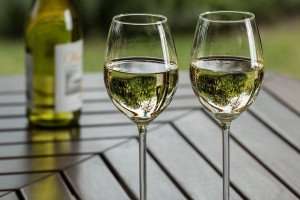Top Food and Drink Trends for Summer
September 26, 2024
There are very few activities we find more exciting or interesting than trying new foods and cooking our favorite innovations at home. Summer is…
Read This Post Wine tasting is a popular culinary activity everywhere wine is made: who wouldn’t want to try out and compare the various varietals and vintages to find out which one you like best? But have you actually ever done a wine tasting? Did you know how to swirl the wine in the glass? Did you know how (or where? or whether?) to spit?
Wine tasting is a popular culinary activity everywhere wine is made: who wouldn’t want to try out and compare the various varietals and vintages to find out which one you like best? But have you actually ever done a wine tasting? Did you know how to swirl the wine in the glass? Did you know how (or where? or whether?) to spit?
Today we’ll break down the “do’s and don’ts” of wine tasting. First, let us be clear: if you are participating in a wine tasting on one of our culinary vacation tours, there is no “wrong” way to do it. As long as you are a courteous traveler, even the worst faux pas will be looked on with indulgent humor (and perhaps perplexity).
But we want our travelers to feel at ease and a part of the local culture while on our cooking tours, so here are a few rules of thumb to keep in mind.
Book our favorite wine tasting tour in Tuscany.
 Wine Tasting Tours: 4 Dos and Don’ts
Wine Tasting Tours: 4 Dos and Don’ts1. How to hold it
A wine glass has a stem for a reason. It’s not to keep your sticky fingerprints off the glass, as my mother would have me believe. It’s so that your hands don’t change the temperature of the wine. If you cradle the glass with your hands, you might be surprised how quickly the heat transfers, and that is not ideal for whites nor for reds. Plus, how can you hold the wine up to the light to observe the clarity and balance of colors if you’ve got your hand around the bulb of the glass?
Read 5 things you shouldn’t do on a culinary vacation in Italy.
2. Give it air
Another note on the glass itself, why the big bulb? It’s to help in aerating the wine, a very important step in wine drinking. The air interacts with the wine, bringing it to life. You might have noticed that red wine glasses tend to have larger bowls: this is because they benefit more than white wines from the addition of oxygen. Decanting, by the way, is another way to increase the oxygen to which the wine is exposed.
Explore all our wine-themed culinary tours.
3. Smell it
The aroma of the wine is part of any tasting, and is a key contributor in how we experience the taste of the wine.
Have you wondered why so little wine is poured into so large a glass? Try swirling wine around in a glass filled to the brim and you’ll find out.
When you’re smelling the wine, there are three basic steps: smell, swirl, smell again. To swirl the wine, you do just like you might expect, moving the wine around in the glass in a circle (the more vigorously, the better). The large bowl and the stem definitely make this process easier! Someone explained to me years ago that the bouquet of the wine is supposed to increase substantially from the first sniff to the second, as the swirling releases the complex aromas. If it doesn’t, it’s quite frankly not a very good wine.
Try our wine & chateaux tour in France’s Loire Valley.
When you’re tasting the wine (finally!) remember not to gulp. Take a small sip, and if possible “slurp” it a bit, as though through a straw: far from being rude, this helps aerate the wine. Roll the wine around in your mouth, keeping in mind the texture and the five tastes humans can perceive: sweet, sour, salty, bitter, and umami (or savory). Finally, either swallow the wine, or, if you are going to be tasting a lot of wines, spit it into a spittoon (not back into your glass!).
Visit the iconic wineries of the Antinori family in Tuscany.
 Don’t forget: when you’re ready to try it yourself, the best way to do so is during a food and wine tour, where you can explore the vineyards, visit the wineries, and experience the wines in their natural habitat (preferably accompanied by delicious local cuisine). Contact us for suggestions and details on our cooking vacations.
Don’t forget: when you’re ready to try it yourself, the best way to do so is during a food and wine tour, where you can explore the vineyards, visit the wineries, and experience the wines in their natural habitat (preferably accompanied by delicious local cuisine). Contact us for suggestions and details on our cooking vacations.
Cheers!
Read more about what to expect during our cooking classes, and what to pack for our trips.
By Peg Kern
Find more photos, videos, food facts, and travel stories from The International Kitchen on Facebook, Instagram, Pinterest, Twitter, and YouTube.
Sign up to receive our newsletter, which includes travel tips, recipes, promotions, and information on our best cooking vacations.